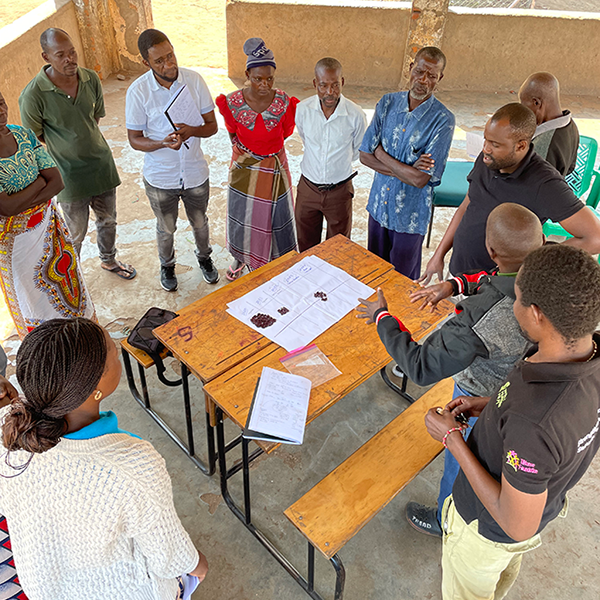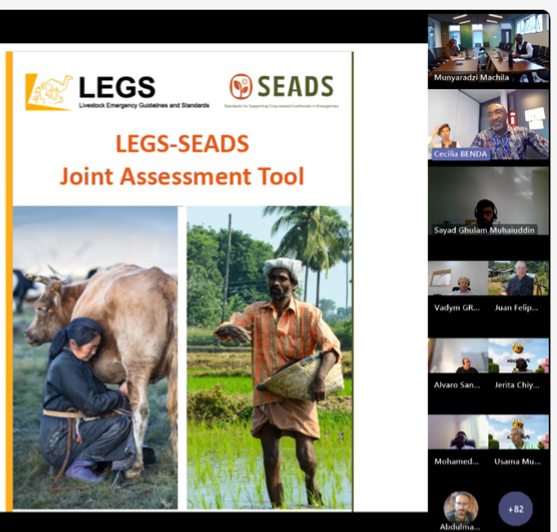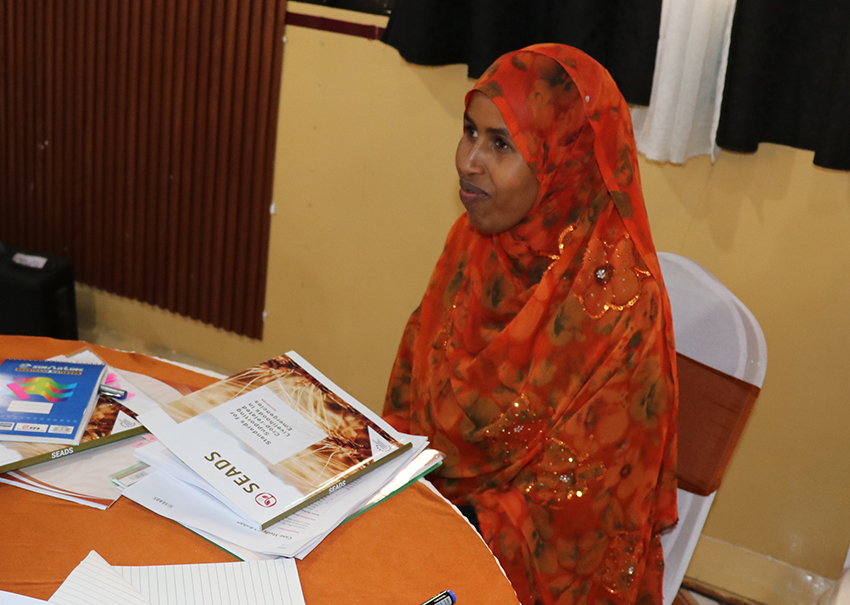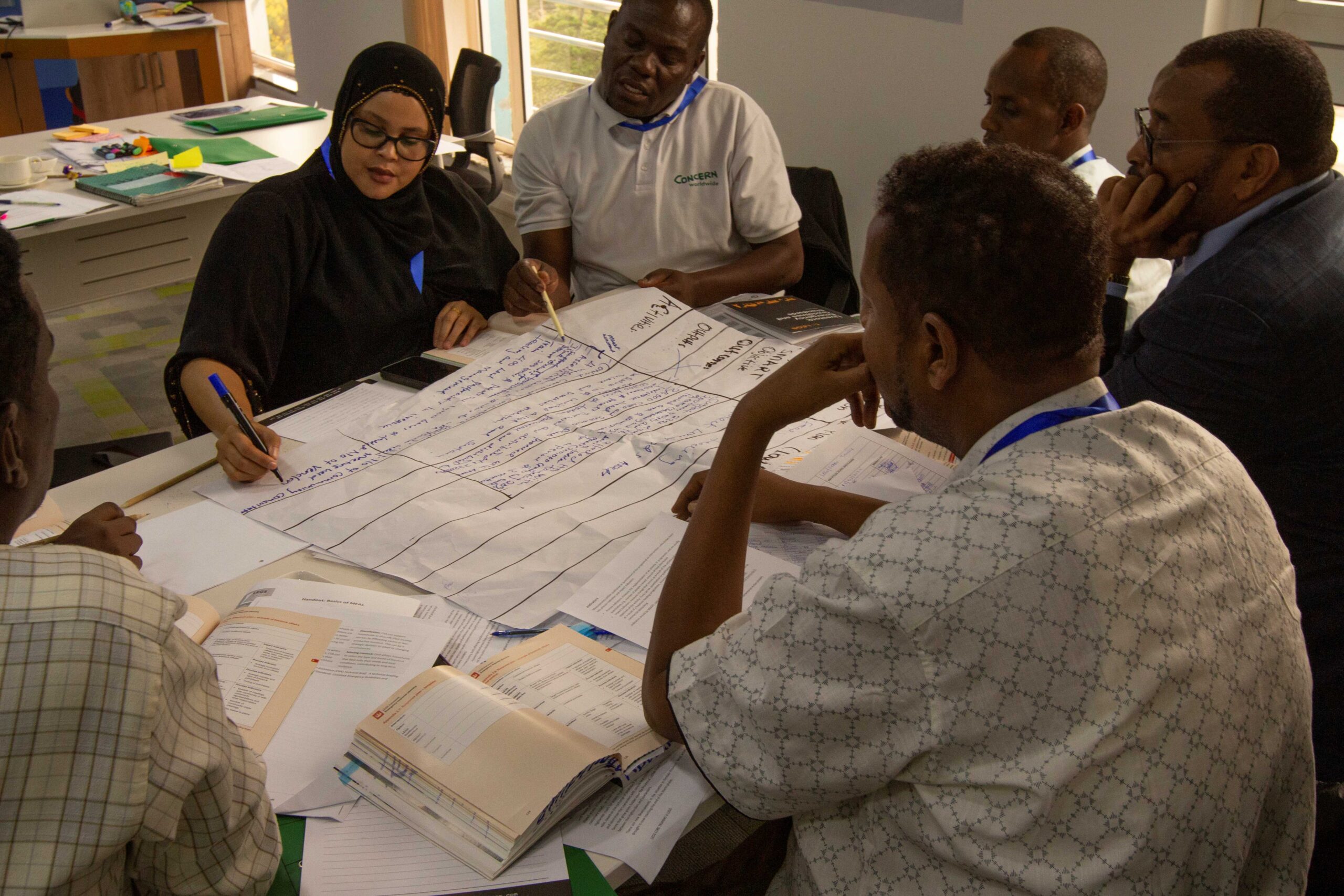
By Alistair Short, SEADS Coordinator
Throughout rural areas in low-income countries affected by crises, small-scale mixed farming systems are common and, in many cases, rely on synergies between crop and livestock production. In these circumstances, an initial assessment during an emergency should ideally address agricultural production and livelihoods as a whole.
To aid responders in conducting more holistic assessments, LEGS (Livestock Emergency Guidelines and Standards) and SEADS devised the LEGS-SEADS Joint Assessment Tool (JAT). The existing LEGS and SEADS Handbooks[1] share some important elements, including core principles, participatory approaches to response identification, and the Humanitarian Standards Partnership-based structure of standards/key actions/guidance notes. Both also contain guidance and question lists for initial assessment[2] as the first stage of response planning.
However, conducting two separate assessments – one for crops and the other for livestock – would constitute a waste of time and resources, place an unnecessary burden on affected communities, and potentially lead to overlooking important production and livelihoods linkages between livestock and crops. In light of this, the JAT was devised to bring together assessment processes from the LEGS and SEADS Handbooks in a more user-friendly and accessible way. By doing so, we can facilitate more effective initial assessments in mixed farming and agro-pastoral communities.
I was delighted to join our SEADS partners in Malawi to field test the draft tool in July 2024. The mission was a collaborative effort involving Catholic Relief Services (CRS), Concern Worldwide, the National Agriculture Cluster (NAC), and representatives from the Ministry of Agriculture, in addition to LEGS and SEADS.
What did we do?
The mission began with a two-day preparation phase (in Blantyre). This involved training team members – including three crop specialists, three livestock specialists, LEGS and SEADS staff (including myself and the consultant who drafted the JAT), and two district-based extension officers[3] – on the JAT and its applications; selecting pertinent questions; and ensuring competence in using participatory rural appraisal tools. The goal was to create a well-rounded team capable of effective data collection and analysis.
Fieldwork then took place over two days in Nsanje District, the poorest district in Malawi, which is characterized by mixed farming and a high prevalence of shocks, such as dry spells, cyclones, floods, and Fall Armyworm. The district also suffers from chronic poverty, a common issue in southern Malawi. Assessments in neighbouring villages followed a consistent approach: first meeting with community representatives, then with marginalized groups and livestock owners.
After fieldwork was completed, we dedicated half a day to data analysis and presentation preparation. Delivered later that day, the presentation was a two-hour event attended by nine in-person participants and 32 online attendees, including a significant contingent from USAID’s Bureau of Humanitarian Assistance (BHA) from both Malawi and Washington, and many NGO representatives and Government NAC members.
What did we learn?
- Impact of participatory approaches: The JAT enables farmers to assess the impacts of recurrent shocks on their livelihoods. As a participatory approach, the tool highlighted the degradation of crop and livestock-related livelihoods, leading to crisis levels of food insecurity in the region. There is ever-declining production and income from crops and livestock over time, particularly following seven years of recurrent co-variate shocks; and an increasing number of years with multiple shocks.
- Importance of inclusivity: Initial fieldwork meetings were male-dominated and lacked representation from people with disabilities. Adjustments were made to include more marginalized groups in subsequent sessions by intentionally seeking them out.
- Improved language and communication: For better comprehension and engagement, it is necessary to translate the JAT into local languages, such as Chechewa.
It was also exciting to see that field testing confirmed the JAT’s potential to assist in strategic decision-making:
- Role of livestock and crops: It became evident that both livestock and crops play significant roles in the livelihoods of affected people, justifying our holistic response.
- Impact of crisis: The negative impacts of multiple crises over several years on livestock and cropping were sufficient to require a combined response.
- Intervention feasibility: No critical issues, such as security concerns or overlapping support from other actors, were found to prevent a crop or livestock intervention. However, effective communication and coordination are necessary for a successful response.
Moving forward
I am thrilled that the JAT has been finalized and is now ready for use ahead of the next farming season in Malawi, starting in October-November, with shocks most prevalent during the rainy season (December-February) and into the initial stages of the winter irrigation season (March-June). The key question now is how to support and roll out the JAT effectively. The mission in Malawi provided valuable insights and reinforced the importance of participatory approaches, inclusivity, and clear communication. As we prepare for the next steps, these lessons will guide our efforts to enhance food security and resilience in vulnerable communities.
In Malawi, the aim (with further capacity building support from CRS, Concern Worldwide, and Ministry of Agriculture) is for the JAT to be promoted for field use by NAC members. At a global level, LEGS and SEADS will roll out the tool to complement our existing handbooks for crop and livestock responses in emergencies.
To stay up to date with our latest news and resources, please sign up to the respective LEGS and SEADS newsletters.
[1] Download the LEGS Handbook and the SEADS Handbook
[2] See LEGS Handbook Chapter 3 Emergency Response Planning; and SEADS Handbook Chapter 4 Initial Assessment for Crop-related Crisis Response.
[3] The team comprised two women and eight men; field teams should be gender balanced.



